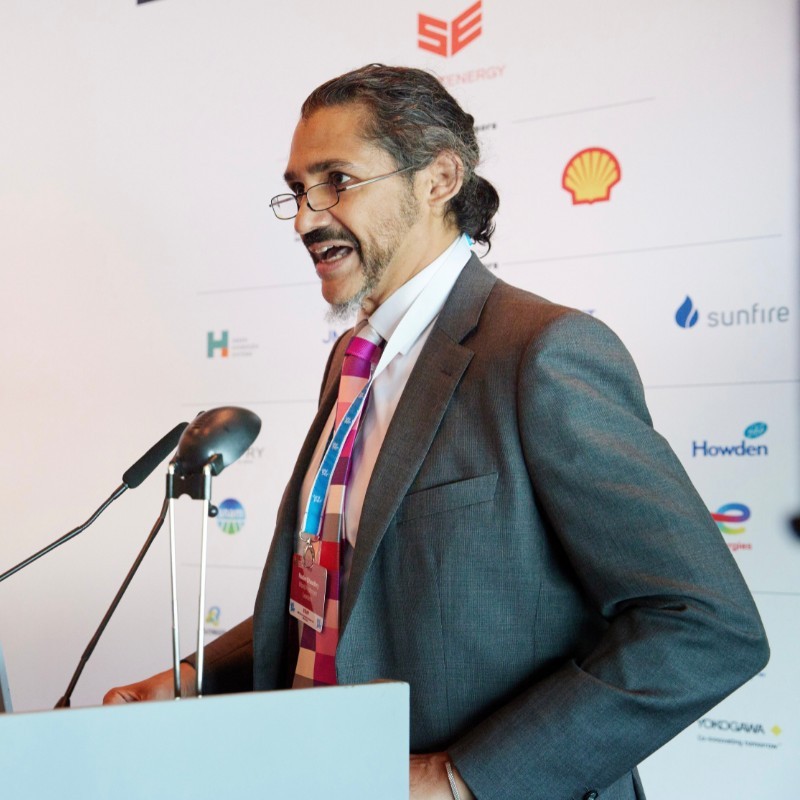Post - Blog

Nadim Chaudhry , Chief Executive Officer, World Hydrogen Leaders

WFES 2026 (World Future Energy Summit)
Hydrogen – particularly green hydrogen – is now recognised as a vital zero-emissions energy source instrumental in the fight against climate change.
Despite its many attributes, the promise of a new hydrogen economy is facing multiple financial hurdles including capital still not flowing in at the scale needed; inflation; slowness to implement policy around regulation and subsidies; and technology and infrastructure issues.
At COP27 there were several significant announcements around new initiatives and projects to move the clean hydrogen industry forward. However, despite some progress, the economic challenges around the future of hydrogen remain, ultimately resulting in few low-carbon hydrogen project financing deals being closed. While some in the industry argue that the small number of final investment decisions (FID) is normal for such a nascent industry, others are concerned that only around 4-5 per cent of clean hydrogen projects are under construction or have reached FID stage [1] .
What’s holding us back?
The International Energy Agency (IEA) points to a combination of policy and regulatory uncertainty, high costs, lack of infrastructure and uncertain demand for the final product. To keep climate goals on track, it estimates that 70 million tonnes of clean hydrogen will need to be produced per annum by 2030, with only 1 million being produced today. But at the current rate of around 1000 announced projects to date globally, this means we are looking at only 30 million tonnes annually by 2030 [2] . And of those that actually have investment locked in, the figure falls to less than 2 million tonnes [3] . According to the Hydrogen Council, a total investment of $320 billion is needed for those anticipated 1,000 projects, but with only $29 billion committed so far [4] .
Inflation matters
Following the supply chain disruptions and political tensions emerging from the Russia-Ukraine war, inflation has become a major concern for many industries. With more nations reducing their reliance on Russian gas and looking to towards energy self-sufficiency, there has been an increased demand for raw resources (particularly steel and copper) for renewable development, which has also been exacerbated by logistics issues. While these higher costs of construction have not had much impact on assets already in operation (as costs are typically hedged at the time of FID), inflation risk remains in the growth pipeline, where tariffs have been approved but the project itself hasn’t been confirmed and costs not yet locked in.
As an example, according to S&P Global Commodity Insights, the cost of electrolytic hydrogen from renewable energy rocketed to $16.80/kg in July of last year, three times the normal price in recent times [5] .
Inflation predictions for the foreseeable future are likely to mean that future projects become more expensive, particularly those with multiyear construction periods, where assets are valued at the start of the construction period. While developers will no doubt factor this in, they are likely to be confronted with increased insurance premiums.
The need for policy
Many believe that without strong government policy support, green hydrogen development will not scale up in the timescale required.
As Director of Infrastructure Investments at Igneo Infrastructure Partners, and one of the impressive line-up of speakers at World Hydrogen Week, Devina Parasurama suggests that “investors require a degree of certainty, more financial support and scale, which can be done through effective policies at various levels. At the national level, strategies with timelines and targets are the first step to creating a stable planning horizon and certainty for stakeholders”.
Trading versus fading
As there is currently a very limited merchant market for trading hydrogen or hydrogen derivatives, producers are facing a significant challenge when seeking to take out futures contracts to guarantee a price for their hydrogen. Banks remain skittish around the potential size of future revenue and in order to resolve this, projects requiring financing need to have “bankable” offtake schemes in place, often with offtake agreements in other market sectors where hydrogen – such as petroleum refining or ammonia production – has proved itself at scale. Continued success in these industries would also go a considerable way to proving that clean hydrogen is genuinely viable and encouraging the scale-up and adoption of electrolyser technology.
Conclusion
While from an economic viewpoint, the immediate future of clean hydrogen might have an uncertain pathway and not insignificant financial challenges to overcome, progress is still being made. Having been largely dismissed in the early stages, it is now widely accepted that it will have a major role in the energy transition. For the latest critical insights on the hydrogen state of play, the global opportunities and challenges and to better understand the real potential for clean hydrogen, there is no better venue than World Hydrogen Week in Rotterdam, 9-13 October 2023, where over 3000 world-leading developers and investors will meet to accelerate the hydrogen future.
[1] IEA: https://www.iea.org/energy-system/low-emission-fuels/hydrogen and Global Hydrogen Review 2022; IEA
[2] Hydrogen Insights May 2023; Hydrogen Council, McKinsey & Company
[3] As above
[4] As above
